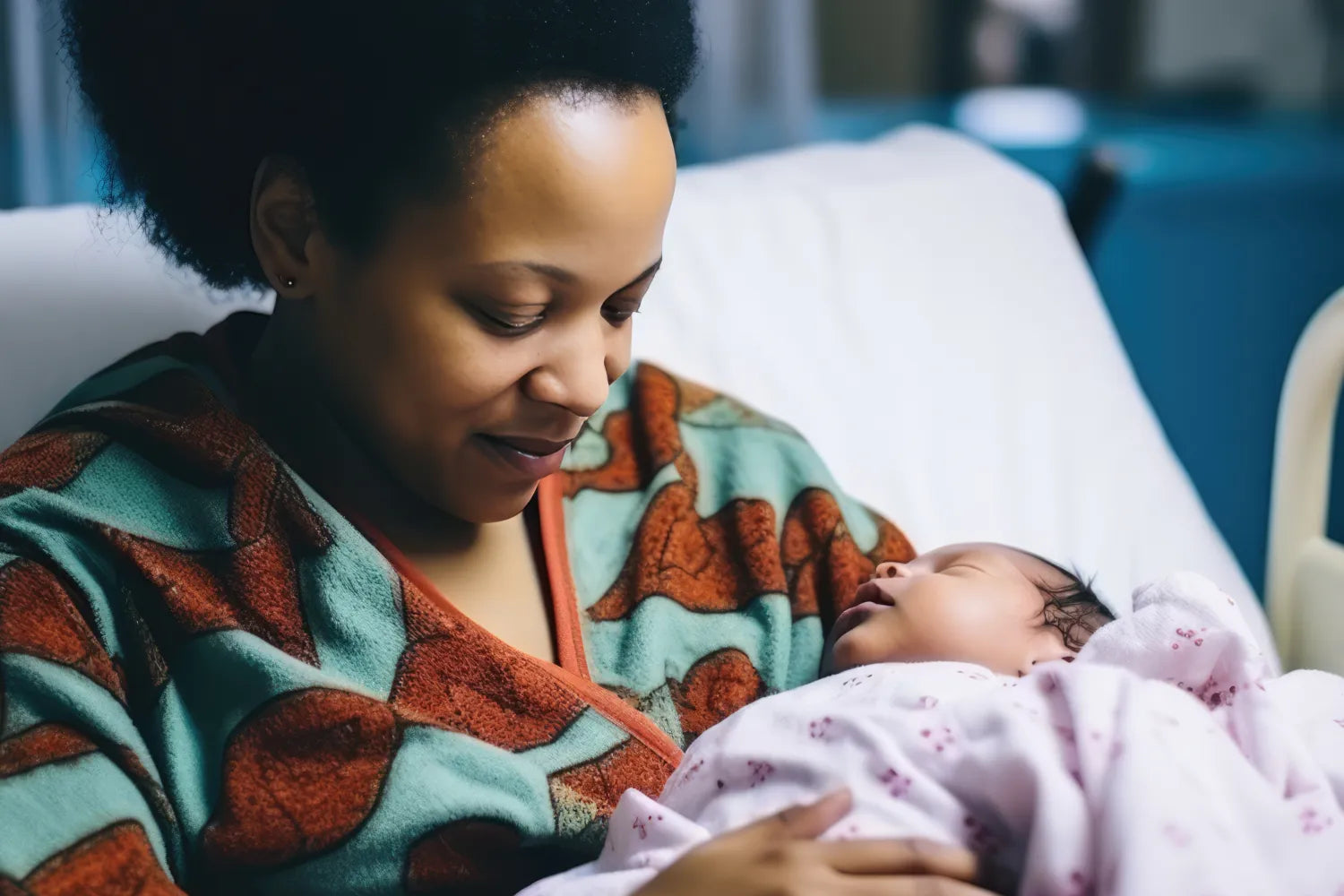After giving birth — also known as the postpartum stage, which lasts about six weeks — you will experience some unusual symptoms, including sudden bleeding. If you aren’t expecting it, the side effects of giving birth can feel drastic. But rest assured that vaginal discharge is a normal occurrence.
So, how long does postpartum bleeding last? Let’s walk through the timeline and what you can expect.
What Is Lochia?
Postpartum lochia is the body’s process immediately after giving birth. Lochia is post-pregnancy bleeding. While you’re pregnant, you might forget all the wonderful joys of menstruation.
Monthly bleeding? I don’t know her! But after your 9+ month window of going period-free, you will see the return of vaginal bleeding.
What Causes Lochia?
After giving birth, your body needs time to reset to its pre-pregnancy state. As such, your hormones, physical self, and even emotional self might need some time to adjust. While your system learns a new normal, you will experience lochia.
Simply put, lochia is the shedding of leftover placenta, mucus, endometrial tissue, blood, and other fluids. What was once imperative in the stages of growing your baby can now be discarded from your body. Your uterus contracts to release discharge, so you may experience some cramping and pain.
Remember that you also have an internal wound where the uterine wall and placenta detached, which contributes. However, this is all the normal process after a vaginal delivery.
What Are the Three Stages of Postpartum Bleeding?
Lochia is divided into three stages, making it easier to track where you are in the process and what is normal for you to be experiencing. Each of the stages of postpartum bleeding has a distinct name.
The exact timeline of when you’ll transition from one stage to another depends on the person. However, by tracking the color and type of bleeding you’re experiencing, you should be able to get a good sense of how your body is progressing through lochia.
Lochia Rubra (Stage 1)
During lochia rubra, you will experience dark or bright red bleeding. Lochia is heaviest in the first few days after giving birth, and discharging small clots is common.
If you notice that your body is shedding large clots bigger than a quarter, speak to your doctor. Generally, the first three or four days after giving birth are lochia rubra.
Lochia Serosa (Stage 2)
The second stage of lochia is called lochia serosa. At this point, bleeding slows down a bit and feels more like a standard menstrual period. Your discharge will transition to be more pinkish or brown, rather than bright red, as your inner wounds heal. Lochia serosa lasts about two weeks.
Lochia Alba (Stage 3)
Lastly, lochia alba takes you to the end of postpartum bleeding. During this stage, the amount of discharge will continue to taper off and become lighter and more watery. Don’t be concerned if you encounter some bleeding, as spotting is normal. Lochia alba may last a final four weeks or so.
What To Be Aware of
While lochia is to be expected after giving birth, there are some signs you want to be watching out for, as they could represent an issue.
Blood Clots
As mentioned, blood clots can be a normal part of the postpartum bleeding process, as your body sheds excess tissues and blood cells from your body. While you shouldn’t be alarmed by small blood clots during the earlier stages of lochia, large clots can be a cause for concern. Abnormal clotting may be a sign of a deeper issue, like excess blood loss or preeclampsia.
Preeclampsia is a high blood pressure disorder that may be caused by constricted blood vessels in the placenta. It can begin to develop early in pregnancy but be discovered later, around 20 weeks. Monitoring for large clots and attending all post-birth check-ups are good ways to scan for this issue.
Blood Loss
It is also possible to experience heavier than normal bleeding during lochia, which should be discussed with your doctor. You can expect your body to shed during the first hours and days after giving birth, but the pace should be steady and manageable. For instance, if you have to change your extra-absorbent pad within an hour, this signals excessive blood loss.
This may be a symptom of postpartum hemorrhage, which can occur hours or weeks after giving birth. Along with excessive blood flow, signs include clammy skin, blurred vision, low blood pressure, nausea, and confusion.
One cause of postpartum hemorrhage is your body having difficulty with uterine contractions, which are necessary to reduce the bleeding after labor.
Infection
During postpartum recovery, you have a higher risk of developing an infection. From one standpoint, your reproductive tract and genitals undergo a form of trauma during childbirth. This can lead to bacteria entering where it normally wouldn’t. Yet, infection risk is also increased after having a C-section.
One way to help prevent infection is to keep the area clean and fresh. Be sure to change any bandaging or post-partum pads at least 4x per day. Also, wait to use tampons for about six weeks to help keep the environment clean.
Physical Changes After Delivery
After you’ve given birth — whether vaginal birth or cesarean birth — everything will feel different in your life. Not only will your family grow, but your body will experience changes. Understandably, there will be some side effects of growing and birthing a baby, but remember to be kind to yourself when your body feels strange.
For instance, one less-than-fun change in your body after birth is sweatiness and body odor. Also, your gut and vaginal microbiomes might be off for a while after delivering. And be prepared for stomach cramps, larger breasts, and lactation, at least for a few weeks.
Can I Treat Postpartum Bleeding At Home?
Postpartum bleeding can be easily cared for at home. Lochia typically causes heavy bleeding that tapers off over weeks. It may feel like a lot of blood, especially after going without menstruation for nine or so months. Make sure you’re prepared with extra absorbent sanitary pads.
Your doctor can recommend practices to make you more comfortable, such as over-the-counter pain relief or an ice pack. Always talk to them first about next steps.
When Should I Call My Healthcare Provider After Delivery?
It’s best to be careful with your health, especially after a life-changing physical experience like childbirth. Along with your regularly scheduled postpartum check-up (usually two to three weeks after birth), don’t hesitate to contact your doctor if you think something could be wrong.
Certainly, if you believe you might be experiencing an infection, abnormal bleeding, or irregular blood loss, make an appointment with a health professional. You know your body best, and when something is wrong, you can tell. Yet, after birth, bodies can do unexpected things, and it’s better to be safe.
Managing Lochia
Lochia is a normal phenomenon for people with vaginas after they give birth. The best way to be prepared for postpartum bleeding is to be prepared — by knowing what to expect, having supplies on hand, and mentally prepping.
The weeks after birthing can be strange, but they’re also fleeting, so try to stay present in the moment and enjoy the miracle of birth!
Sources:
The Postpartum Maternal and Newborn Microbiomes | National Library of Medicine







